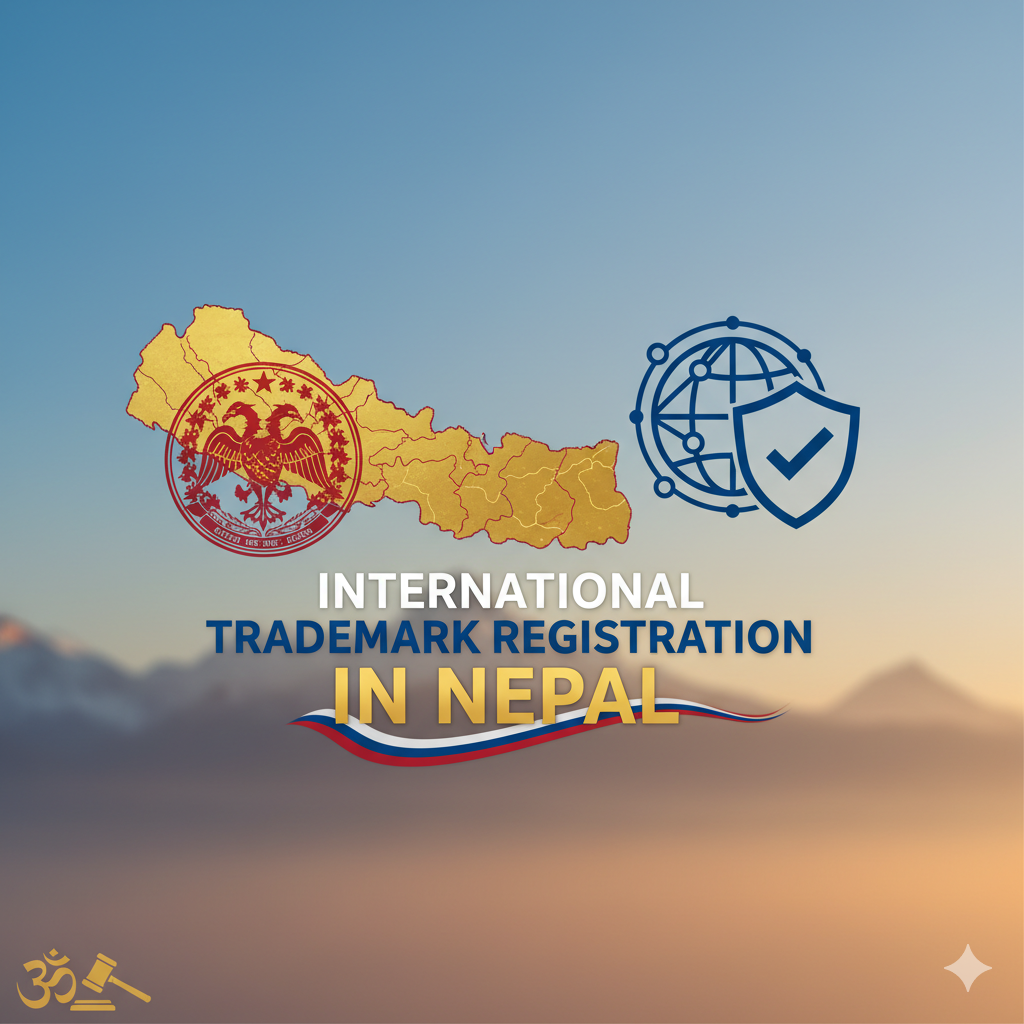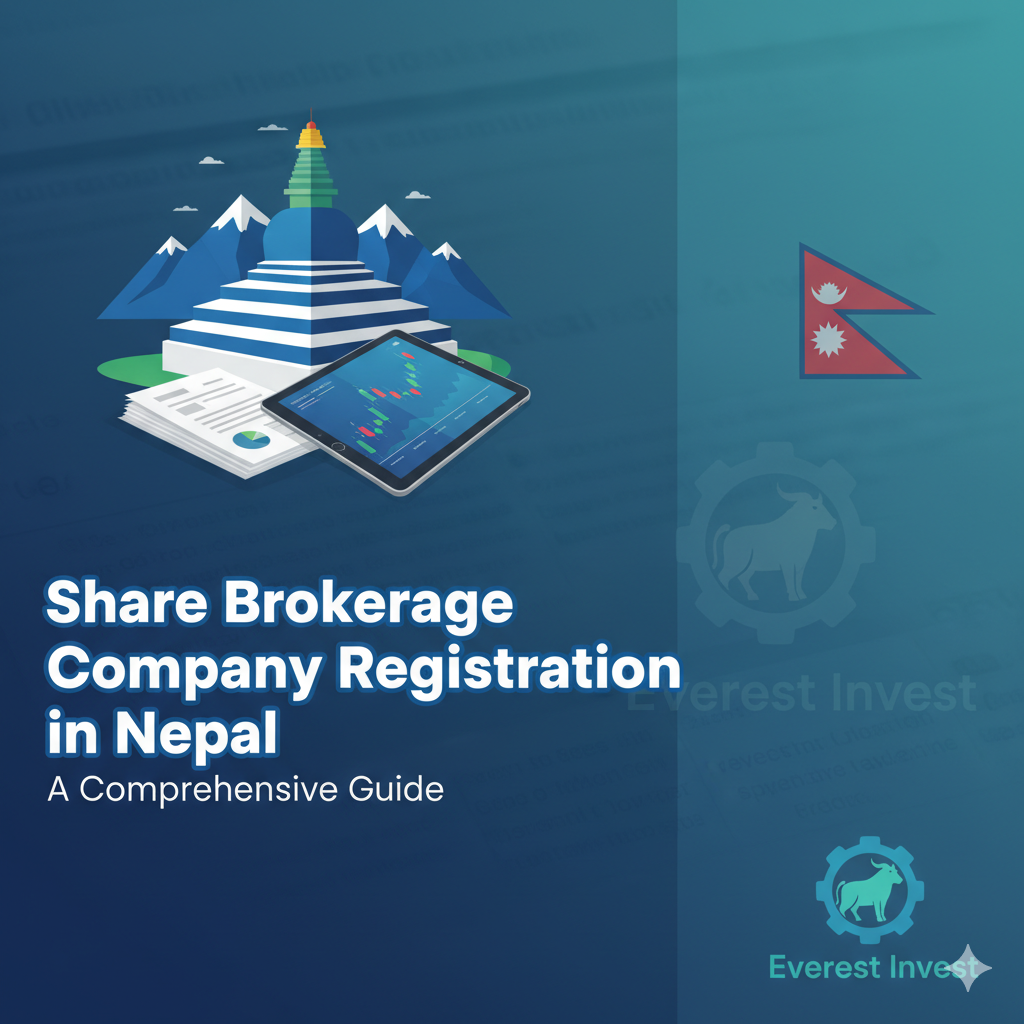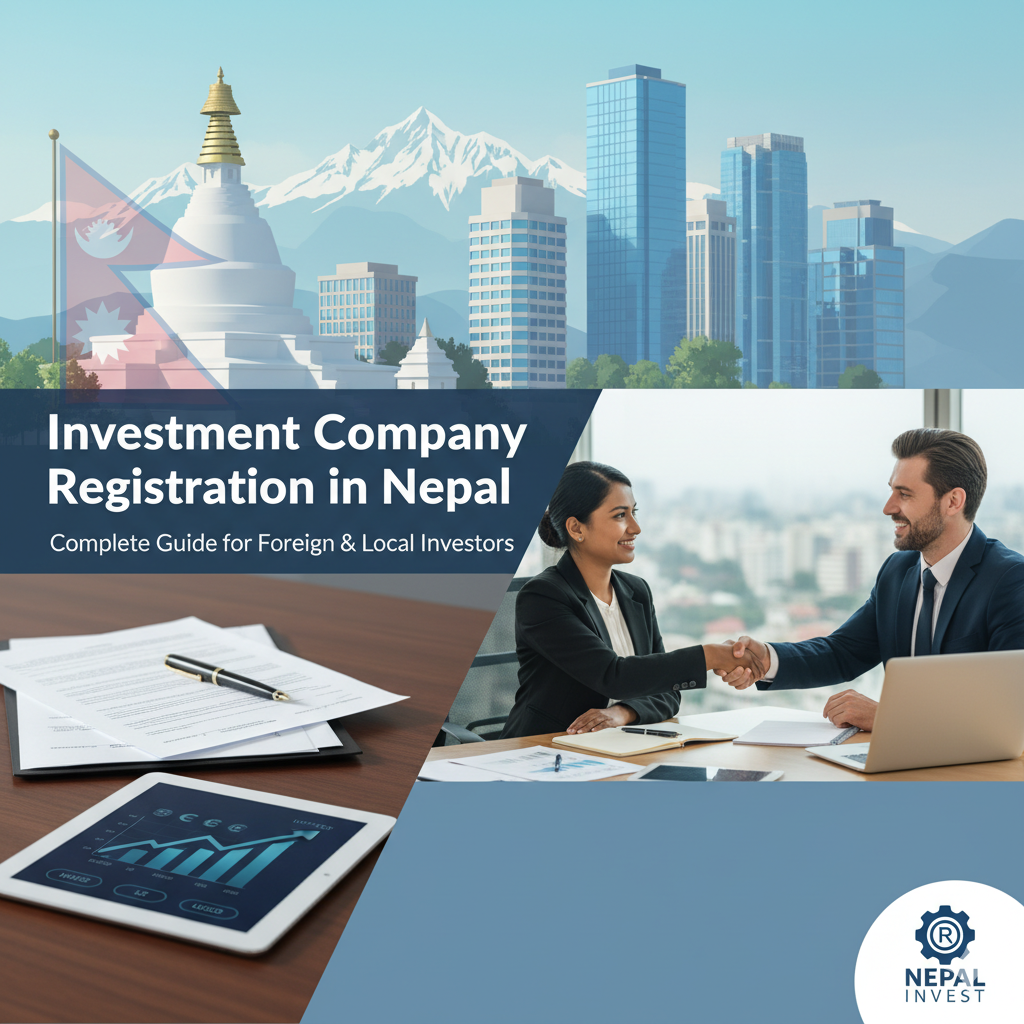
Expanding your business into new international markets is an exciting venture, filled with tremendous growth potential. Nepal, with its emerging economy and strategic location between two economic giants, India and China, presents a unique opportunity for forward-thinking businesses. However, with opportunity comes risk, and one of the most significant risks is failing to protect your brand’s identity. Securing International Trademark Registration in Nepal is not just a legal formality; it’s a critical business strategy that safeguards your most valuable asset—your brand reputation. This comprehensive guide will walk you through everything you need to know about establishing trademark protection in the Nepali market, ensuring your business can thrive with confidence.
Understanding Nepal’s Trademark Registration System
Before diving into the application process, it’s essential to grasp the fundamentals of Nepal’s legal framework for intellectual property. The system is designed to protect the rights of brand owners while maintaining a fair and transparent process for all applicants.
Governing Laws and Institutions
The primary legislation governing trademarks in Nepal is the Patent, Design and Trademark Act, 2022 (1965). This act, along with its associated rules, outlines the entire registration process, rights afforded to trademark owners, and legal remedies for infringement. The administrative body responsible for all trademark-related matters is the Trademark Registration Office (TMR), which operates under the Department of Industry in Kathmandu. All applications, filings, and correspondence must be channeled through this official body.
Nepal’s “First-to-File” Principle
A crucial aspect of Nepal trademark law is its adherence to the “first-to-file” principle. This means that the rights to a trademark belong to the first person or entity to file an application for its registration, regardless of who first used it in commerce. For international businesses, this underscores the urgency of acting swiftly. Delaying your trademark registration Nepal could result in a local entity or a faster competitor registering your brand name or logo, potentially blocking your market entry or leading to costly legal battles.
Who is Eligible for International Trademark Registration in Nepal?
Nepal’s trademark system is quite accessible to foreign applicants. You do not need to be a Nepali citizen or have a registered company within the country to seek protection. The eligibility criteria are straightforward and designed to encourage foreign investment and brand presence.
Eligibility Criteria for Foreign Applicants and Businesses
Any individual, partnership firm, or corporation—regardless of nationality or place of incorporation—can apply to register trademark Nepal. The law recognizes the following as eligible applicants:
- Foreign Individuals: Any person who is not a citizen of Nepal can apply.
- Foreign Corporations: A company incorporated outside of Nepal can file a trademark application directly.
- Joint Applicants: Multiple individuals or entities can apply for a trademark jointly.
While foreign entities can apply directly, it is highly advisable to work through a local legal representative or agent. This simplifies communication with the TMR, ensures all documentation is correctly prepared and filed, and helps navigate any procedural nuances.
Step-by-Step Process for Registering a Trademark in Nepal
The journey to securing your trademark in Nepal involves several distinct stages. Understanding this process is key to managing expectations and planning your market entry strategy effectively. Here is a detailed breakdown of the International Trademark Registration in Nepal process.
Step 1: Conduct a Comprehensive Trademark Search
Before investing time and resources, the first and most critical step is to conduct a thorough search of the TMR’s database. This search will determine if your proposed trademark (name, logo, slogan, etc.) is identical or deceptively similar to any existing or pending trademarks in Nepal. A preliminary search can often be done online, but a comprehensive search conducted by a local attorney is recommended to uncover any potential conflicts that could lead to a rejection or opposition later.
Step 2: Preparation of Application Documents
Once you’ve confirmed the availability of your trademark, the next step is to prepare the application. Accuracy is paramount here. Your application must include:
- The applicant’s full name, address, and nationality.
- A clear representation of the trademark (e.g., a high-resolution image for a logo or a word mark).
- A list of goods and/or services for which the trademark will be used, classified according to the International Classification of Goods and Services (Nice Classification).
- A signed Power of Attorney if you are using a local agent.
Step 3: Filing the Trademark Application
The completed application, along with the required documents and prescribed fees, is submitted to the Trademark Registration Office in Kathmandu. Upon submission, the TMR will issue an official receipt with a filing date and an application number. This filing date is crucial under the “first-to-file” system, as it establishes your priority over any subsequent applications for the same mark.
Step 4: Formal Examination
After filing, the application undergoes a formal examination by the TMR. During this stage, the officials check the application for compliance with procedural requirements, such as correct form, proper classification, and payment of fees. If any deficiencies are found, the TMR will issue an office letter, and the applicant will be given a chance to rectify the errors.
Step 5: Substantive Examination
Once the application passes the formal examination, it moves to the substantive examination stage. Here, the trademark examiner assesses the mark’s distinctiveness and ensures it does not conflict with any prior existing trademarks. The examiner checks if the mark is descriptive, generic, or contrary to public order or morality. If the examiner finds a reason for refusal, they will issue a refusal report, and the applicant will have an opportunity to submit arguments or amendments to overcome the objection.
Step 6: Publication and Opposition Period
If the application successfully clears the substantive examination, it is published in the official Industrial Property Bulletin. This publication opens a 90-day opposition period, during which any third party who believes they will be damaged by the registration of your trademark can file an opposition. This is a critical phase where a local competitor might challenge your application. Having a local attorney is invaluable for monitoring the bulletin and preparing a robust defense against any opposition.
Step 7: Registration and Certificate Issuance
If no opposition is filed within the 90-day period, or if any filed opposition is successfully resolved in your favor, the TMR will proceed to register the trademark. A Certificate of Registration will then be issued, granting you exclusive rights to use the trademark in Nepal for the goods and services specified in your application. This is the final step in the International Trademark Registration in Nepal process.
Required Documents and Application Procedures
To ensure a smooth filing process, it’s essential to have all your documents in order. Here is a checklist of the typical requirements for trademark protection Nepal:
- Applicant Information: Full name, address, and nationality of the individual or company.
- Trademark Specimen: A clear representation of the trademark in JPEG format. For word marks, a simple text representation is sufficient.
- List of Goods/Services: A detailed list categorized according to the Nice Classification. Nepal recognizes all 45 classes.
- Power of Attorney: A signed document authorizing a local agent in Nepal to act on your behalf. This can be filed shortly after the main application but is required for prosecution.
- Proof of Use (Optional but Recommended): While not mandatory at the time of filing, evidence of prior use in commerce (e.g., invoices, marketing materials) can strengthen your application, especially during an opposition proceeding.
Timeline and Costs Associated with Trademark Registration
Patience is a virtue when it comes to trademark registration Nepal. The process is thorough but can be lengthy.
Typical Timeline
From filing to registration, the entire process typically takes 12 to 24 months. This timeline can vary significantly based on several factors:
- Workload at the TMR: Backlogs can extend examination times.
- Objections or Oppositions: If your application faces an objection from the examiner or an opposition from a third party, the process can be delayed by several months or even years.
- Accuracy of Application: Errors in the initial filing will require corrections, adding to the overall timeline.
Cost Breakdown
The costs involved in International Trademark Registration in Nepal are generally more affordable than in many Western countries, but they are still a significant consideration. The total cost comprises two main components:
- Official Government Fees: These are fixed fees paid to the TMR for filing, examination, and publication. They are calculated per class of goods or services.
- Professional Fees: These are the fees charged by your local attorney or agent for their services, including conducting the search, preparing the application, corresponding with the TMR, and handling any objections or oppositions.
While exact figures fluctuate, budgeting for both official fees and professional legal assistance is essential for a successful outcome.
Benefits of Registering Trademarks in Nepal for International Businesses
Investing in Nepal intellectual property protection yields significant returns that go far beyond simply having a certificate. Here are the key benefits for your business:
- Legal Monopoly: Registration grants you the exclusive right to use your trademark throughout Nepal. This legal monopoly prevents others from using identical or confusingly similar marks for your goods or services.
- Deterrent Effect: A registered trademark is a public record of your rights. It acts as a powerful deterrent to potential infringers who might otherwise “free-ride” on your brand reputation.
- Asset Creation: A trademark is an intangible asset. It can be licensed, franchised, or sold, creating an additional revenue stream for your business. A registered trademark significantly increases the valuation of your company.
- Strong Legal Standing: In case of infringement, a registered trademark provides a solid legal foundation for initiating legal action. It makes it easier to obtain court injunctions, claim damages, and seize counterfeit goods.
- Customs Recordation: Once registered, you can record your trademark with Nepal Customs. This enables them to proactively seize and prevent the importation of counterfeit goods bearing your mark, protecting your brand at the border.
- Foundation for Franchising: If your business model involves franchising, a registered trademark is a non-negotiable prerequisite. It ensures that your brand identity is legally protected as you expand your network of franchisees in Nepal.
Common Challenges and How to Overcome Them
Navigating the Nepal trademark law landscape can present certain challenges for international businesses. Being aware of them is the first step toward mitigation.
- Language Barrier: All official correspondence and documentation must be in English or Nepali. Misinterpretations can lead to errors in your application.
- Solution: Hire a reputable local agent or law firm fluent in both English and Nepali to handle all communications and ensure accuracy.
- Lengthy Processing Time: As mentioned, the process can be slow, which can be frustrating for businesses eager to launch.
- Solution: Plan your market entry timeline well in advance. File your trademark application as early as possible to secure your priority.
- Potential for Bad-Faith Filings: Due to the “first-to-file” system, there is a risk of local entities registering well-known foreign trademarks in bad faith to sell them back to the original owners.
- Solution: Conduct a thorough search before filing and act quickly. If you discover a bad-faith filing, a local attorney can help you navigate the cancellation or opposition process.
- Limited Online Infrastructure: While improving, the TMR’s online systems may not be as robust as those in more developed countries.
- Solution: Rely on your local representative who has experience with the TMR’s procedures and can handle filings and follow-ups in person or through established channels.
Renewal and Maintenance Requirements
Your trademark rights in Nepal are not perpetual. They require active maintenance to remain in force.
Renewal Requirements
A trademark registration in Nepal is valid for seven years from the date of filing. After that, it can be renewed indefinitely for subsequent periods of seven years each. A renewal application must be filed within six months before the expiry date. There is also a grace period of six months after the expiry date, during which the trademark can still be renewed, but this will incur an additional late fee. Failing to renew the trademark will result in its removal from the register, and your exclusive rights will be lost.
Legal Protections Afforded by Nepali Trademark Law
Once registered, your trademark is shielded by the full force of the Patent, Design and Trademark Act, 2022. This law provides several remedies against infringement:
- Injunctions: You can seek a court order to stop the infringer from using your mark.
- Damages: You can claim financial compensation for any losses suffered due to the infringement.
- Account of Profits: You can demand that the infringer surrenders any profits they made from using your trademark illegally.
- Seizure and Destruction: The court can order the seizure and destruction of infringing goods and packaging.
Enforcing these rights requires initiating legal proceedings in Nepali courts, which is another reason why having a local legal partner is indispensable.
Conclusion: Secure Your Brand’s Future in Nepal
Expanding into Nepal offers immense potential, but success hinges on protecting the core of your business—your brand. International Trademark Registration in Nepal is a strategic investment that provides legal security, creates a valuable corporate asset, and gives you the confidence to build your market presence without fear of brand theft. While the process requires patience and careful navigation, the long-term benefits far outweigh the initial effort and cost.
By understanding the legal framework, preparing diligently, and engaging with expert local counsel, you can successfully secure trademark protection Nepal and pave the way for a prosperous and secure business venture in this vibrant Himalayan nation. Don’t leave your brand’s future to chance.
Ready to protect your brand in Nepal? Contact our team of international IP experts today for a consultation and take the first step towards securing your trademark rights in the Nepali market.



